TYPE DESIGN INFORMATION PAGE last updated on Mon Dec 1 14:08:08 EST 2025
FONT RECOGNITION VIA FONT MOOSE
|
|
|
|
|
Mongolian fonts | ||
|
|
|
|
SWITCH TO INDEX FILE
Akira Kamimura
| |
Andrew West
| |
Ankhbayar Byambasuren is a digital artist based in Ulaanbaatar, Mongolia. Behance link. He made the ultra-fat experimental typeface TSELMEG (2010). [Google] [More] ⦿ | |
Ariel Laurencio Tacoronte
| |
At the University of Sofia (Bulgaria), several font zip files containing the Mongolian fonts CMsHuree, CMsUlaanbaatar and CMsUrga, and the Mongolian font family TimesNewRomanMon. See also here. [Google] [More] ⦿ | |
Designer of the Mongolian font family called Mongolian Writing. [Google] [More] ⦿ | |
BabelStone
|
Andrew West's free font BabelStone Modern was designed between 2008 and 2013. This font has almost 2000 glyphs and covers, e.g., Latin, Cyrillic, Ogham, and Braille, and has hundreds of symbols, including a large set of arrows, mathematical symbls, domino tiles, and dingbats. BabelStone Han (2017) is a Unicode Han font in Song/Ming style with G-source glyphs used in Mainland China. The font is derived from Arphic's AR PL Mingti2L Big5 and AR PL SungtiL GB fonts, converted to Unicode mappings, and expanded to cover a wide range of traditional and simplified characters in the CJK, CJK-A, CJK-B, CJK-C, CJK-D, CJK-E, and CJK-F blocks, as well as a large number of currently unencoded characters in the Private Use Area. A few glyphs for non-CJK symbol characters are derived from images uploaded to Wikimedia Commons by Christopher J. Fynn. The number of glyphs is closeto 40,000. [Google] [More] ⦿ |
Brian Moses Hall developed Classical Mongolian. Mac only. See also here. [Google] [More] ⦿ | |
CMs (Classical Mongolian script)
| Three great Mongol truetype fonts by Peter Cheung (aka dEgi, Taiwan) in 1998: CMs Ulaanbaatar, CMs Huree, CMs Urga. Free. Alternate URL. [Google] [More] ⦿ |
Mongolian designer of OEMD MNS (2001), based on Arial. [Google] [More] ⦿ | |
| |
Denis Roegel
| |
Graphic designer in Ulaanbaatar, Mongolia. In 2012, he created the geometric Latin hairline typeface Circles. [Google] [More] ⦿ | |
Paris-based designer of a typeface for the Sogdian alphabet. [Google] [More] ⦿ | |
An old list from 2000 taken from a defunct site calle Monkhtor had these Mongol/Cyrillic truetype fonts: AcadHoCTT (SoftCom Co), Arial family, CourierNew family (Free Programmers Software), CrrCTT (SoftCom Co), DTAntiqua family, DTFuturaEugeniaBold, DTFuturis, DTInform, DTJournalSans family, ChOpus (Tilde), DTTimesType family, DTZhikharevItalic, ChancellerieModerneDemo, InformCTT (SoftCom Co), NewtonCTT (SoftCom Co), PragmaticaCTT (SoftCom Co), Map-Symbols, Symusic (music font by Autodesk). The "DT" fonts all by D. Tamir, 1993. [Google] [More] ⦿ | |
Spanish language site for various non-Latin language fonts. A sampling: Afus Deg Wfus 2 (for Berber), AlKatib1 (2001, an Arabic typeface by Naseem Amjad), Albanian, Alice_0 (Lao typeface by by Ngakham Southichack), LAOMAY_5 CHAREUNSILP (Lao typeface by by Soupasith Bouahom), Arial AMU (1999, Armenian typeface by Ruben Tarumian), BaltFrutigerLight, BaltHelveticaMedium, BaltNewCenturySchoolbookMedium, BaltOptimaMedium, BaltTiffanyMedium, BaltUniversityMedium, CarloAtor (1997, Arabic family by Timm Erickson, Summer Institute of Linguistics), Caligraf-W, Ciula (1996, a Romanian typeface by Paul Hodor), Cursiv (Romanian), AnlongvillKhek, GabrialAtor (another Arab family by Timm Erickson), Gin, Greek (1993, by Peter J. Gentry&Andrew M. Fountain), HandSign (1993, Sam Wang), HFMassisShantNUnicode (1990-1994, an Armenian unicode typeface by BYTEC Computers and Massis Graphics), HONGKAD (1994, a family by Dr. Hongkad Souvannavong), IsmarBold, IsmarLight, Lakshmi, X000000A (1994, a lao typeface by Sith Bouahom), LAOMAY_2-CHAREUNSILP, Alice3Medium, Alice0Medium, Langagedessignes (1998, by Philippe and François Blondel), NorKirk (1997, a great Armenian typeface by Ruben Tarumian), NovaTempo (for Esperanto), Pazmaveb (for Armenian), ILPRumanianB100 (1996, by Charles J. Coker), Saysettha-Lao, Saysettha-LaoBold, SenzorgaAnhok, Timok, Tribuno, Turn-W, TimesUnicode, ArialAMU, PoliceTypeAPI (for Armenian), Cieszyn-Regular, PoojaNormal, Shibolet (1995, Hebrew), Shree-Ass-0552 (2000, by Modular InfoTech), Tudor-Semi-Lite, Webdunia, TimesNRCzech, TNRLiboriusVII (2001, a fully accented Times typeface by Libor Sztemon), GreatMoravia (2001 Libor Sztemon, Czechia), Johaansi-ye-Peyravi (2001, a full accent blackletter typeface by Libor Sztemon, Czechia), TimesNREuskaraEuransiEsperanto (2001, Libor Sztemon). [Google] [More] ⦿ | |
Jasper was born in 1986 in Duisburg, Germany, and is affiliated with the University of Köln, where he specializes in Modern Chinese Studies. [Google] [More] ⦿ | |
Jo de Baerdemaeker
| |
Koshin Suzuki's free fonts for Tibetan (part of his SuzTib package) and Sanskrit, Pali and Tibetan (his SuzBud package), as well as his free font A1Suzuki for Sanskrit, Pali, Tibetan, English, French, German, Pin-in and Mongolian. The list: A1Suzuki, KanbunU (1999), SuzBudCU, SuzBudRU, SuzBudW, SuzEurU, SuzTibA, SuzTibAD, SuzTibAU, SuzTibB, SuzTibBD, SuzTibBU, SuzTibBY, SuzTibC, SuzTibN, SuzTibR, SuzTibRD, SuzTibRU, SuzTibRY, SuzTibY, A1Ghos (2000), SuzBudC, SuzBudR, SuzEur. All were made by Suzuki in 1999-2000. Download here. [Google] [More] ⦿ | |
LaTeX Navigator
| General links on typography and fonts, compiled by Denis Roegel (with earlier contributions by Karl Tombre who is no longer involved). Very, very useful. This page contains, among other things:
|
Lengua Mongola (was: Vocabulario Mongol)
| Ariel Laurencio's great Mongol language page. He has some links to other Mongol language pages. His page also has the Cyrillic Mongol font Ch Opus (1992, Andrejs Grinbergs, Tilde Ltd) and the Mongol transliteration font Galig (1990, by Akira Kamimura). [Google] [More] ⦿ |
Designer of the Mongolian font Sagaa (2005). [Google] [More] ⦿ | |
Manchu
| A free Mongolian font, Manchu2005 (2005), created by the Manchu Group. The project is headed by Vincent Magiya. [Google] [More] ⦿ |
Designer of the Qagucin Mongol font (for Uighur). [Google] [More] ⦿ | |
| |
Mikiya Nishimura
| |
OOliver Corff's page contains software (mainly for IBM compatibles), fonts (for X Window systems and Linux), documentation in the form of preformatted manpages for the software as well as a description of the Mongolian transliteration underlying the MLS (Mongolian Language Support) system. [Google] [More] ⦿ | |
Notes on the Mongolian script by the Staatsbibliothek zu Berlin. [Google] [More] ⦿ | |
Great archive with about 30 Mongol-Cyrillic truetype families. Free. Copyright by Choijil Company in Mongolia. [Google] [More] ⦿ | |
Microsoft's font for Mongolian, rumoured to have bugs. [Google] [More] ⦿ | |
Mongolian FAQ
| Alternate URL for Oliver Corff's FAQ, dated 2000. [Google] [More] ⦿ |
I quote from the wiki page on Mongolian script. Hudum Mongolian script (in comparison with Todo Mongolian script), was the first of many writing systems created for the Mongolian language and the most successful until the introduction of Cyrillic to Mongolia in 1946. With minor modification, the classic vertical script is used in Inner Mongolia to this day to write both Mongolian and the Evenki language. The Mongolian vertical script was developed as an adaption of the Uyghur script to write the Mongolian language. It was introduced by the Uyghur scribe Tatar-Tonga, who had been captured by the Mongols during a war against the Naimans around 1204. There were no substantive changes to the Uyghur form for the first few centuries. Mongolian sources often distinguish the early forms by using the term Uyghurjin script. Western sources tend to use this term as a synonym for all variations of the Mongolian script. Eventually, minor concessions were made to the differences between the Uyghur and Mongol languages: In the 17th and 18th centuries, smoother and more angular versions of tsadi became associated with [...] and [...] respectively, and in the 19th century, the Manchu hooked yodh was adopted for initial [...]. Zain was dropped as it was redundant for [...]. Various schools of orthography, some using diacritics, were developed to avoid ambiguity. Mongolian is written vertically. The Uyghur script and its descendants-Mongolian, Oirat Clear, Manchu, and Buryat-are the only vertical scripts written from left to right. This developed because the Uyghurs rotated their Sogdian-derived script, originally written right to left, 90 degrees counterclockwise to emulate Chinese writing, but without changing the relative orientation of the letters. [Google] [More] ⦿ | |
Mongolian truetype font archive which has CMsHuree, CMsHureedp, CMsUlaanbaatar, CMsUlaanbaatardp, CMsUrga, CMsUrgadp, all made by Peter Cheung (aka dEgi) in 1998. It also has Tuva Mongol Uni (2003, Mikiya Nishimura, SHAGAA). Alternate URL. [Google] [More] ⦿ | |
MonTEX
| Oliver Corff's Latex and metafont software for Mongolian and Manju. The page is now co-managed by Dorjpalam Dorj. Corff is at the Freie Universität Berlin. Type 1 fonts have been added in 2001: TeX-bcghsb, TeX-bcghsm, TeX-bcghwb, TeX-bcghwm, TeX-bcgvsb, TeX-bcgvsm, TeX-bcgvwb, TeX-bcgvwm, TeX-bicighb, TeX-bicighm, TeX-bicigvb, TeX-bicigvm, TeX-bthhsb, TeX-bthhsm, TeX-bthhwb, TeX-bthhwm, TeX-bthvsb, TeX-bthvsm, TeX-bthvwb, TeX-bthvwm, TeX-bxghsb, TeX-bxghsm, TeX-bxghwb, TeX-bxghwm, TeX-bxgvsb, TeX-bxgvsm, TeX-bxgvwb, TeX-bxgvwm, TeX-kmbx10, TeX-kmr10, TeX-kmss10. [Google] [More] ⦿ |
Designer of the Mongolian version of Arial, MonArial (1993). [Google] [More] ⦿ | |
Oliver Corff
| |
Oliver Corff
| |
Omega Type Foundry
|
His graduation typeface Marco (<2011), which is named after Marco Polo, covers Latin, Mongolian, Greek, and Cyrillic, and has sans and serif versions. Inspiration for Marco goes back to Italian humanist typography such as those of Nicholas Jenson or Aldus Manutius, and general influences from calligraphy. Marco is a true superfamily, with wide utility and superb legibility---not surprisingly, it won an award at Modern Cyrillic 2014. The text styles were professionally produced in 2015 by Type Together in 2015---each style has over 1900 glyphs. His chancery hand typeface Tangerine (2010) is part of the Google font directory (for free web fonts). Typefaces from 2013: Metro Nova (Linotype: a sans family with a strangely circumcised lower case f). Metro Nova won an award at TDC 2014. Typefaces from 2014: Neue Haas Unica and Neue Haas Unica Pan European. A digital update of the Helvetica alternative Haas Unica, which was originally released in 1980 by the Haas Type Foundry for phototypesetting. In 2015, he made Cowhand (Monotype: a Western typeface). All words typed in Cowhand are of equal width, whether they contain one character or twenty (the maximum the font allows). For Monotype, he made the custom typeface Quentin Blake (2016) that emulates the irregular handwriting of Sir Quentin Blake, acclaimed illustrator of Roald Dahl's novels. In 2017, Toshi Omagari designed the Wolpe Collection for Monotype, all based on Berthold Wolpe's distinctive typefaces: Wolpe Pegasus, Wolpe Tempest, Wolpe Fanfare, Sachsenwald (blackletter: a revival of Berthold Wolpe's Sachsenwald from 1936), Albertus Nova. In 2018, Linda Hintz and Toshi Omagari published the large geometric sans typeface family Neue Plak that revives and extends Paul Renner's Plak (1928). Nadine Chahine and Toshi Omagari collaborated with Akira Kobayashi and Monotype Studio on Avenir Next Arabic (2021). At his own foundry, Omega Type, he released these typefaces in 2021: Klaket (a bold and monolinear Arabic display typeface that was inspired by classic Egyptian film posters in a free form Ruqah style), Platia (a modern revival of the 19th century font Hellenic Wide). At ATypI 2011 in Reykjavik, he spoke about Mongolian scripts. At ATypI 2015 in Sao Paulo, he revealed his research on the Siddham (post-Brahmian). Speaker at ATypI 2016 in Warsaw on BubbleKern (a new kerning algorithm). Speaker at ATypI 2017 Montreal on Sini: Arabic calligraphic styles from the Far East. Fontsquirrel link. Dafont link. Klingspor link. I Love Typography link. Google Plus link. Interview by MyFonts in 2022. [Google] [MyFonts] [More] ⦿ |
Peter Cheung
| |
At ATypI 2013 in Amsterdam, he had two presentations. In the first one, he talked about the Mongolian and Balinese scripts, and showcased the first opentype Balinese typeface. His second talk dealt with the modern type design work flow (joint presentation with Georg Seifert). Rainer's own type designs include Traction (original design by Christian Thalmann), Plantago (2014), and Ammer Handwriting. His type productions (I guess he refers to the technical rather than the design aspects) include Acorde by Stefan Willerstorfer, Alena by Roland Stieger, Supernett by Georg Herold-Wildfellner, Adria Grotesk by Marcus Sterz, Martha by Lisa Schultz, Henriette by Michael Hochleither and abc Allegra by Jost Hochuli. Lawabo was conceived by Rainer Scheichelbauer (and possibly Viktor Solt-Bittner). Its minimalistic and rounded shapes are reminiscent of bathroom ceramics, hence the name. Schriftlabor designer Miriam Suranyi added bold and italic shapes, and produced the family in 2017. Speaker at ATypI 2014 in Barcelona. Speaker at ATypI 2016 in Warsaw and at ATypI 2018 in Antwerp. Schriftlabor link. Glyphs App link. [Google] [MyFonts] [More] ⦿ | |
Download Borjagan Book (1997), a Mongolian language font by Robert Carlson from Hong Kong. [Google] [More] ⦿ | |
Commercial Khmer font producer. Salika Ltd is located in Tokyo. Their Khmer fonts are named Khm-1 through Khm-4. They also have fonts for Bengali, Burmese, Chinese, Latin, Hindi, Japanese, Korean, Mongolian, Nepali, Cyrillic, Tamil, Thai and Vietnamese. [Google] [More] ⦿ | |
SHAGAA
| Mongol truetype fonts (Cyrillic, by SoftCom, 1995): AcadHoCTT-regular, CrrCTT-Regular, CrrCTT-Bold, InformCTT-Regular, NewtonCTT-Regular, NewtonCTT-Italic, NewtonCTT-Bold, NewtonCTT-BoldItalic. Plus the Cyrillic Mongol font tuva-mongol-uni (2003) by Mikiya Nishimura (Shagaa). This is a renamed copy of NewtonCTT (1994, SoftComn). At the site, other fonts such as New-Times-New-Roman and New-Arial by SHAGAA (2005). [Google] [More] ⦿ |
I quote: "The Sogdian language belongs to the eastern group of the middle iranian languages, along with Sacian, or Saka (spoken in Khotan, China), Bactrian (spoken in present-day Afghanistan) and Chorasmian (spoken in present-day Northern Uzbekistan). It was originally spoken in Sogdiana, a historical region situated around Samarkand. Other languages of this group are Avestan in the old times and Pashto and Ossetian in the modern times. In the first millennium A.D. it has served as a lingua franca of Central Asia, and it was used both as a means of oral communication and for written purposes, in fact since the beginning of the XX century many excavations have brought to light numberless documents composed in this language, that testify its outmost importance and diffusion in that area. It was a literary language for Buddhism in Central Asia, but also for Nestorian Christianism and Manichaeism. This language has not died out after its decadence, but it has evolved into the Yaghnobi language, spoken in Tajikistan by a few thousand people, and it has been replaced as a cultural language by Persian, a western iranian language." See also here. [Google] [More] ⦿ | |
Oliver Corff's Soyombo for Latex and an intro to the Soyombo script used in parts of Mongolia. [Google] [More] ⦿ | |
Introduced at the time of Genghis Khan, the Mongolian script was widely used until 1942, when Stalin proclaimed that Asian nations including Kazakhstan, Uzbekistan, Turkmenistan and Mongolia must all use Cyrillic instead of their native script. Within 40 years, traditional script was abandoned and forgotten as new generations began learning only Cyrillic. By 1990, a mere 10 per cent of Mongols, mostly the elderly, could read and write in old script. After the fall of the Soviet Empire in 1990, the country returned to its old script. [Google] [More] ⦿ | |
Studio Type (or: Typojo)
|
For his M.A. in Reading in 2004, he designed Lungta (2004). At ATypI 2006 in Lisbon, he spoke about Tibetan letterforms. In 2009, he obtained his doctoral degree from Reading on a topic entitled Tibetan Typeforms: from their inception in 1738 up to the present day. Jo taught at the Department of Typography & Graphic Communication (University of Reading). He presently teaches at the Plantin Institute of Typography (Antwerp), at the European Lettering Institute (Bruges) and at LUCA (campus Sint-Lucas Gent). Earlier he taught at LUCA (campus Sint-Lukas Brussels), and at KASK School of Arts (HO Gent). In 2012, Jo De Baerdemaeker founded Studio Type in Antwerp (Belgium), and collaborates with international design studios and type foundries. He received the title Nieuwe Vlaamse Meester in de Kunst in 2017 from the Flemish Government. Author of Tibetan Typeforms (De Buitenkant). His typefaces:
At ATypI 2006 in Lisbon, he spoke about Tibetan letterforms. Speaker at ATypI 2010 in Dublin: The Javanese typefaces of Johannes Enschedé en Zonen and Lettergieterij Amsterdam voorheen N. Tetterode. Speaker at ATypI 2011 in Reykjavik on The Mongolian script. Speaker at ATypI 2013 in Amsterdam. Speaker at ATypI 2016 in Warsaw (on reverse italics). Speaker at ATypI 2019 in Tokyo on the topic of Ferdinand Theinhardt's Legacy in Tibetan Typography. [Google] [More] ⦿ |
Tengis Khasbagana
| |
Tengis Type
| Tengis Khasbagana (hohhot, China) designed various fonts that are based on traditional Mongolian handwriting. Done ca. 2013, these include Mortal Type, Consummate Type, Monster Type, Whetstone, Post-Utopia, and Steed Type. His company was called Inner Mongolian Typeface Design. In 2017, he designed the Mongolian typeface Amidu. [Google] [More] ⦿ |
Tools for Mongolian-Cyrillic Characters
| Mongolian-Cyrillic software and fonts. Page run by Akira Kamimura, who made these fonts in 1999: Galig, TimesMon-Bold, TimesMon, TimesMonBoldItalic, TimesMonItalic. Included are typefaces by ParaGraph, Monotype, Tilde, D. Tamir and a few others. A partial list: ArialNarrow-Bold, ArialNarrow-BoldItalic, ArialNarrow-Italic, ArialNarrow, ChBernhard, ChCenturion, ChCenturionBold, ChCenturionItalic, ChCompact, ChCompactBold, ChCompactBoldItalic, ChCompactItalic, ChEurope, ChEuropeBold, ChEuropeBoldItalic, ChEuropeDemi, ChEuropeDemiItalic, ChEuropeExt, ChEuropeExtBold, ChEuropeExtBoldItalic, ChEuropeExtItalic, ChEuropeItalic, ChForeigner, ChForeignerBold, ChForeignerBoldItalic, ChForeignerItalic, ChForeignerLight, ChForeignerLightItalic, ChForeignerULB, ChForeignerULBItalic, ChGothic, ChNewton, ChNewtonBold, ChNewtonBoldItalic, ChNewtonItalic, ChOpus, ChOpusBold, ChOpusBoldItalic, ChOpusItalic, ChPaladin, ChPragmatica, ChPragmaticaBold, ChPragmaticaBoldItalic, ChPragmaticaItalic, ChReverence, CourierNew, CourierNewPS-BoldItalicMT, CourierNewPS-BoldMT, CourierNewPS-ItalicMT, CourierNewPSMT, CrrCTT-Bold, CrrCTT-Regular, DTAdverGothicBold, DTAntiqua, DTAntiquaBold, DTAntiquaItalic, DTBaltic, DTBalticBold, DTBalticItalic, DTFreeset, DTFreesetBold, DTFuturaEugeniaBold, DTFuturis, DTFuturisBold, DTInform, DTJournalSans, DTJournalSansBold, DTJournalSansBoldItalic, DTJournalSansItalic, DTSchoolbook, DTSchoolbookBold, DTSchoolbookBoldItalic, DTSchoolbookItalic, DTTimesType, DTTimesTypeBold, DTTimesTypeBoldItalic, DTTimesTypeItalic, DTZhikharevItalic, Galig, InformCTT-Regular, NewtonCTT-Bold, NewtonCTT-BoldItalic, NewtonCTT-Italic, NewtonCTT-Regular, PragmaticaCTT, PragmaticaCTTBold, PragmaticaCTTBoldItalic, PragmaticaCTTItalic, TimesMon-Bold, TimesMon, TimesMonBoldItalic, TimesMonItalic, TimesNewRomanPS-BoldItalicMT, TimesNewRomanPS-BoldMT, TimesNewRomanPS-ItalicMT, TimesNewRomanPSMT. Subpage with the fonts. [Google] [More] ⦿ |
Toshi Omagari
| |
Commercial Windows XP packages sold with foreign language fonts in TrueType and PostScript, called GlobalSuite, GlobalWriter and GlobalOffice. Includes most foreign languages. For example, in the Cyrillic sphere, they have Bulgarian, Byelorussian, Macedonian, Russian, Serbian, Ukrainian plus over 50 additional Cyrillic languages such as Azeri, Kazakh, Kirghiz, Moldavian, Mongolian, Tadzhik, Tatar, Turkmen and Uzbek. And for North Indian, they have Assamese, Bengali, Gujarati, Hindi, Marathi, Nepali, Punjabi, and Sanskrit. [Google] [More] ⦿ | |
Vincent Magiya
| |
Yume Takahashi's site has the Mac and PC fonts for Mongolian: Monold, Monout1, Monout2, Monin1, Monin2, Monmkm1 and Monmkm2. I can't figure out how to download them. [Google] [More] ⦿ |
|
|
|
|

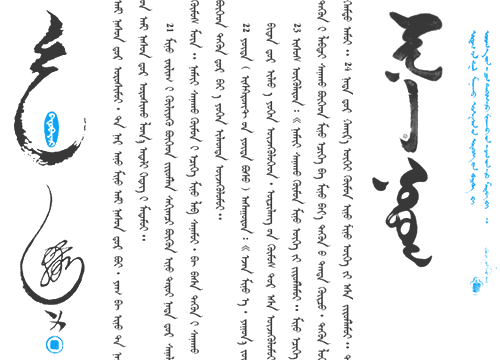
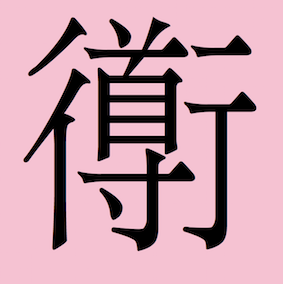 UK-based Andrew West's great intro page to the 'Phags-pa script, a Brahmic script based on Tibetan that was used for writing Mongolian, Chinese and other languages during the Mongolian Yuan dynasty (1271-1368). Although it is no longer used for Mongolian and Chinese, it is still used to a limited extent as a decorative script for writing Tibetan. Unlike other Brahmic scripts, 'Phags-pa was written vertically from left to right after the manner of the Uighur-derived Mongolian script. The script is named after its creator, the Tibetan lama known by the title 'Phags-pa Lama "Reverend Lama" (1239-1280).
UK-based Andrew West's great intro page to the 'Phags-pa script, a Brahmic script based on Tibetan that was used for writing Mongolian, Chinese and other languages during the Mongolian Yuan dynasty (1271-1368). Although it is no longer used for Mongolian and Chinese, it is still used to a limited extent as a decorative script for writing Tibetan. Unlike other Brahmic scripts, 'Phags-pa was written vertically from left to right after the manner of the Uighur-derived Mongolian script. The script is named after its creator, the Tibetan lama known by the title 'Phags-pa Lama "Reverend Lama" (1239-1280). 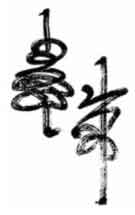 Designer of these Mongolian-Cyrillic fonts in 1993: DTAdverGothicBold, DTAntiqua, DTAntiquaBold, DTAntiquaItalic, DTBaltic, DTBalticBold, DTBalticItalic, DTFreeset, DTFreesetBold, DTFuturaEugeniaBold, DTFuturis, DTFuturisBold, DTInform, DTJournalSans, DTJournalSansBold, DTJournalSansBoldItalic, DTJournalSansItalic, DTSchoolbook, DTSchoolbookBold, DTSchoolbookBoldItalic, DTSchoolbookItalic, DTTimesType, DTTimesTypeBold, DTTimesTypeBoldItalic, DTTimesTypeItalic, DTZhikharevItalic. These can be found
Designer of these Mongolian-Cyrillic fonts in 1993: DTAdverGothicBold, DTAntiqua, DTAntiquaBold, DTAntiquaItalic, DTBaltic, DTBalticBold, DTBalticItalic, DTFreeset, DTFreesetBold, DTFuturaEugeniaBold, DTFuturis, DTFuturisBold, DTInform, DTJournalSans, DTJournalSansBold, DTJournalSansBoldItalic, DTJournalSansItalic, DTSchoolbook, DTSchoolbookBold, DTSchoolbookBoldItalic, DTSchoolbookItalic, DTTimesType, DTTimesTypeBold, DTTimesTypeBoldItalic, DTTimesTypeItalic, DTZhikharevItalic. These can be found 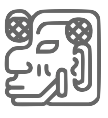 Between 2005 and 2012, Jasper Habicht (Accipiter Media, Germany) created the free typefaces
Between 2005 and 2012, Jasper Habicht (Accipiter Media, Germany) created the free typefaces  The list of new fonts in Windows 7 in 2009:
The list of new fonts in Windows 7 in 2009: 

 Rainer Erich (Eric) Scheichelbauer was born in Vienna and designs typefaces, works for other type designers, teaches type design and typography at a graphic art school, gives type design workshops, writes articles for a design magazine, writes Python scripts, translates Dutch books on typography into German and writes the
Rainer Erich (Eric) Scheichelbauer was born in Vienna and designs typefaces, works for other type designers, teaches type design and typography at a graphic art school, gives type design workshops, writes articles for a design magazine, writes Python scripts, translates Dutch books on typography into German and writes the  Belgian type designer (b. Brussels, 1974) who lived in Kessel-Lo, and is now based in Antwerp.
Belgian type designer (b. Brussels, 1974) who lived in Kessel-Lo, and is now based in Antwerp. 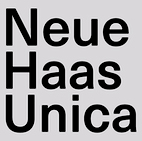 [
[